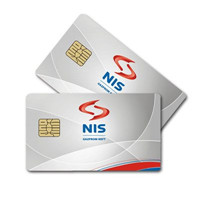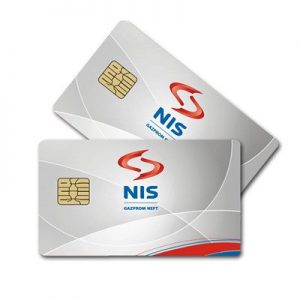Smart cards play a crucial role in enhancing physical security through access control systems. They provide a secure and efficient way to manage entry and exit to buildings, facilities, and other restricted areas. Here’s how smart cards are used to enhance physical security through access control:
- Secure Authentication: Smart cards require users to present the card for authentication, often accompanied by a PIN or biometric verification. This multi-factor authentication significantly increases the security level compared to traditional methods like keys or passwords.
- Biometric Integration: Smart cards can be integrated with biometric data, such as fingerprints or iris scans, adding an extra layer of security by ensuring that only authorized individuals can access the premises.
- Individual Identification: Each smart card is unique, which ensures that only authorized individuals with valid cards can gain access. This prevents unauthorized duplication of access credentials.
- Access Control Profiles: Smart cards can store access control profiles specifying the areas or zones an individual is allowed to enter. This enables granular control over who can access different parts of a facility.
- Visitor Management: Smart cards can be issued to visitors, contractors, or temporary personnel with limited access rights, ensuring that they can only enter approved areas during their visit.
- Centralized Management: Access control systems using smart cards allow centralized management of user profiles, access permissions, and revocation of privileges in real-time.
- Audit Trails: Smart card access control systems log each entry and exit, creating an audit trail that can be reviewed for security purposes, investigations, or compliance requirements.
- Anti-Passback and Time Zones: Smart cards can enforce anti-passback rules, preventing users from sharing cards to gain unauthorized entry. Time-based access permissions can also be configured.
- Lost Card Protection: In the event of a lost or stolen card, access control administrators can quickly deactivate the card, preventing unauthorized access until a replacement is issued.
- Integration with Other Systems: Smart card access control systems can be integrated with other security systems like CCTV cameras, alarm systems, and intercoms for a comprehensive security solution.
- Emergency Situations: In emergency situations, smart card access control systems can be configured to enable quick evacuation by allowing all doors to be open, or specific doors to be unlocked.
- Remote Management: Some smart card access control systems offer remote management capabilities, enabling administrators to monitor and control access from a centralized location.
- Compliance and Reporting: Smart card access control systems help organizations meet compliance requirements by providing accurate records of who accessed which areas and when.
- Scalability: Smart card access control systems are scalable, making them suitable for various types of facilities, from small offices to large corporate campuses.
In summary, smart cards enhance physical security by providing secure authentication, user-specific access control, and auditability in access control systems. Their integration with biometrics, central management, and advanced features make them a reliable solution for safeguarding facilities and assets while ensuring a streamlined and secure access process.


























